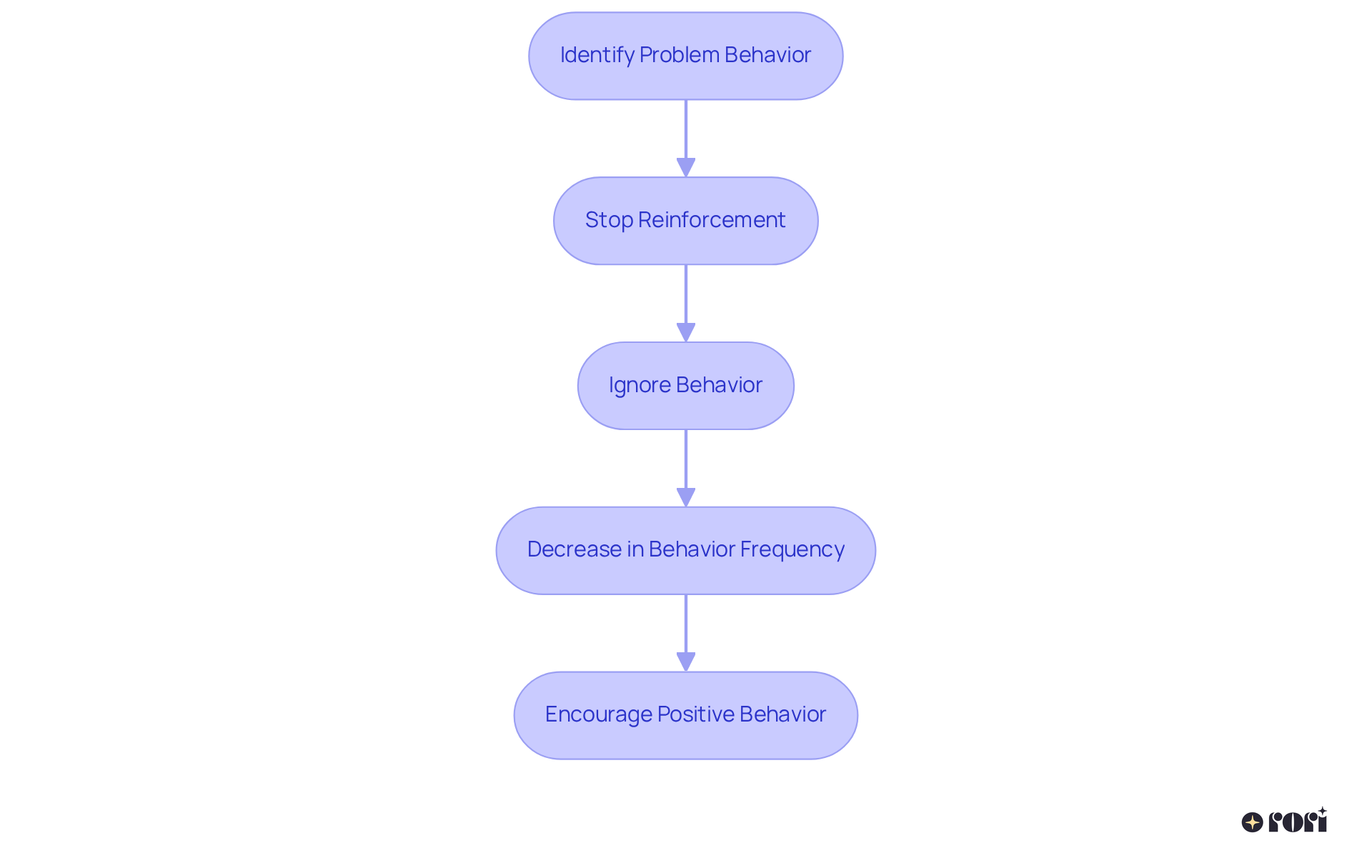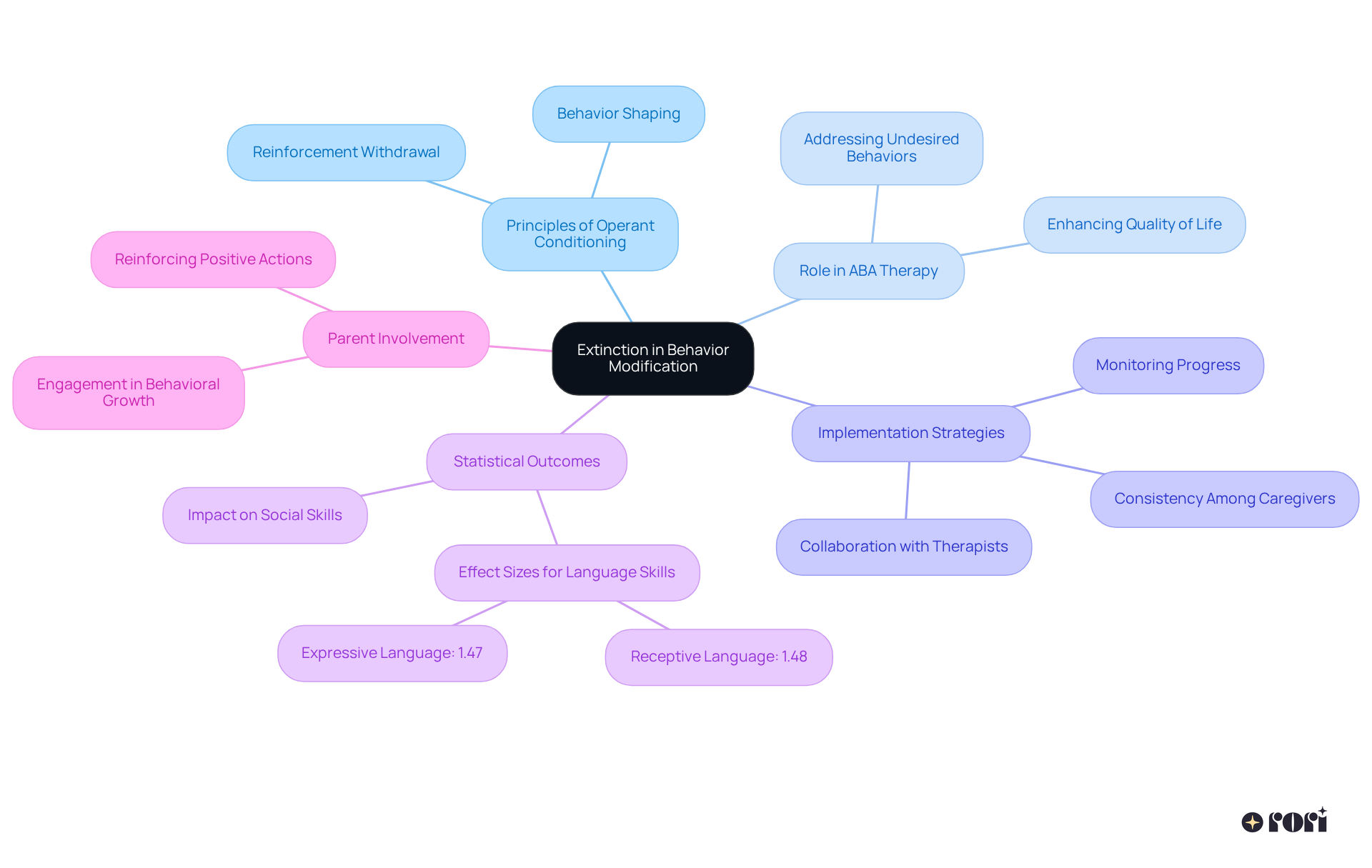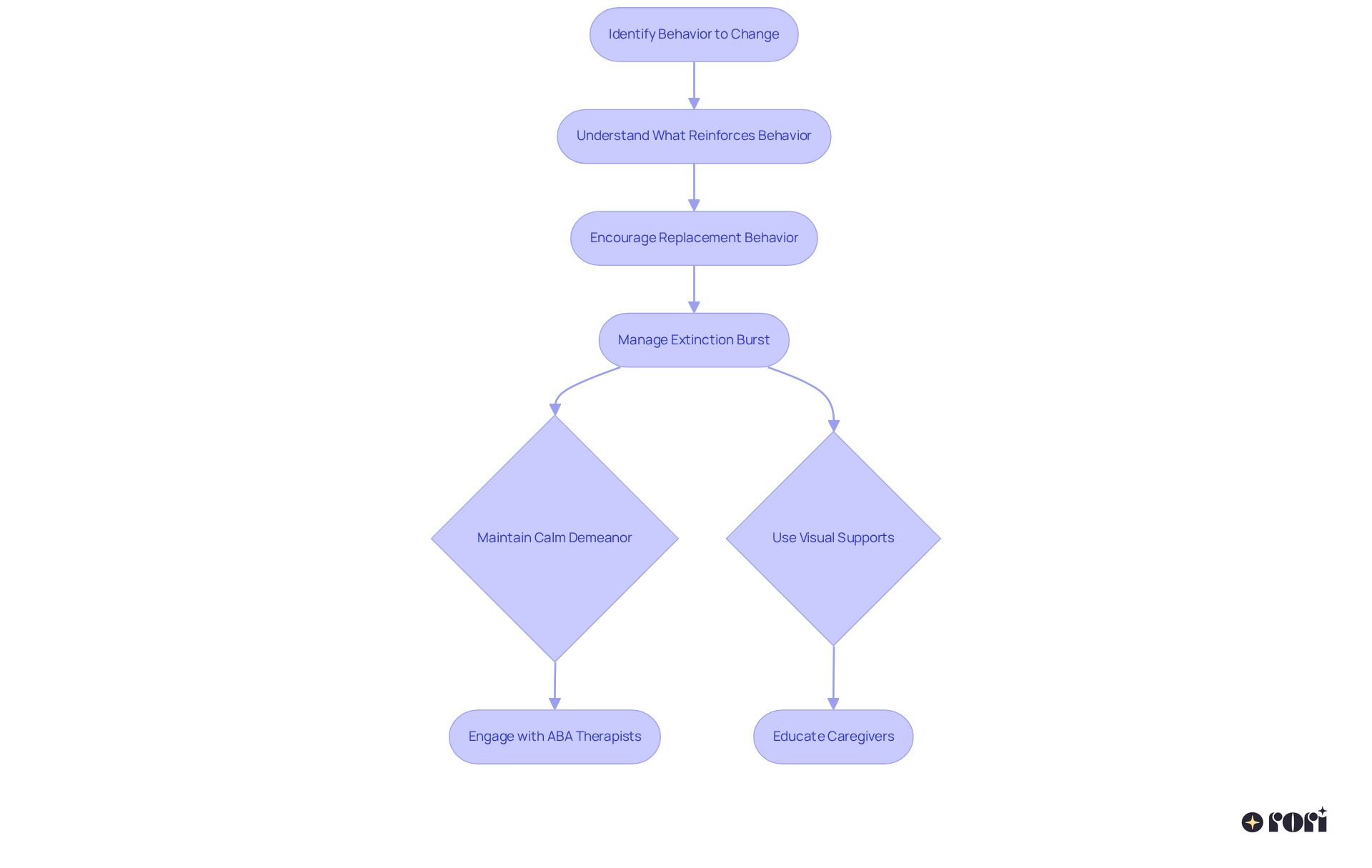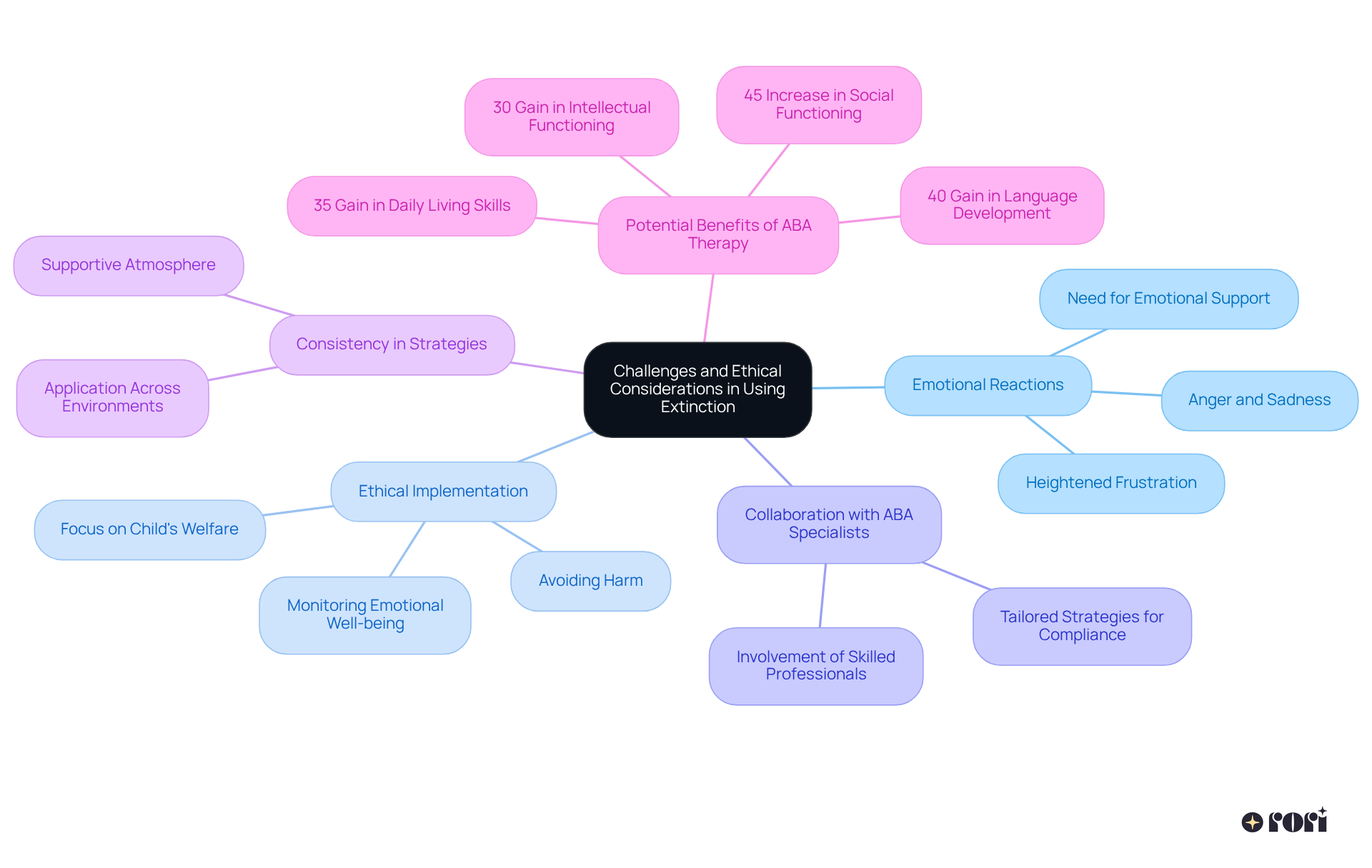This article dives into the extinction strategy used in ABA therapy, a method designed to help reduce those pesky undesired behaviors by simply removing the reinforcement that encourages them. It’s all about being consistent and getting caregivers involved—after all, research shows that these approaches can lead to real, positive changes in children, especially those with autism spectrum disorder.
As parents, you might wonder how to effectively implement this strategy. Think of it like a team effort; the more everyone is on board, the better the results! We know that navigating these challenges can feel overwhelming, but you’re not alone in this journey. Many families have seen significant behavioral improvements when they work together with professionals.
So, let’s explore this together! If you have questions or experiences to share, we’d love to hear from you. Remember, we’re here to help you every step of the way!
Understanding the intricacies of behavior modification can feel overwhelming for parents, especially when diving into the world of Applied Behavior Analysis (ABA) therapy. One powerful technique in this toolkit is the extinction strategy, which aims to reduce unwanted behaviors by taking away the reinforcement that keeps them going. As caregivers work hard to encourage positive changes in their children, a crucial question comes to mind: how can they put these strategies into practice while keeping their child's emotional well-being in check?
Let’s explore this together! This article takes a closer look at extinction strategies in ABA therapy, providing insights and practical tips for parents eager to support their child's growth. We’re here to help you every step of the way!
In Applied Behavior Analysis (ABA) therapy, the extinction strategy is a technique that helps reduce or eliminate certain behaviors by stopping the reinforcement that once encouraged them. For instance, if a child discovers that throwing a tantrum gets them attention, the extinction strategy would involve ignoring the tantrum, which removes that reinforcement. Over time, this lack of reinforcement leads to fewer tantrums.
This method is crucial for changing behavior because it directly addresses the underlying reinforcement mechanisms, which is essential for an effective extinction strategy that paves the way for healthier behavior patterns. Research shows that ABA therapy, which includes these reduction strategies, boasts an impressive success rate of over 89% in helping children with autism spectrum disorder (ASD). Isn’t that amazing? It really highlights how effective this approach can be in reshaping behaviors.
When caregivers are actively involved and suggested hours are fully utilized, about 90% of children show significant progress. In everyday life, you might see this elimination technique in action when tantrums are managed by withholding previously given rewards, like toys, until the child calms down. By understanding and applying these extinction strategies, parents and caregivers can play a vital role in encouraging positive behavioral changes in their children.
Educating caregivers enhances their ability to provide the right support at home, complementing professional help and ensuring consistency. This education arms caregivers with the knowledge and skills necessary to adjust treatment plans based on progress reports, making sure that the termination process is effective and well-coordinated with trained ABA therapists. Let’s explore this together and see how we can support our little ones in the best way possible!

The principles of operant conditioning underpin extinction strategies, where our actions are shaped by their consequences. In the world of Applied Behavior Analysis (ABA) therapy, the extinction strategy plays a vital role in addressing those tricky behaviors that can hold a young person back. Research shows that many actions serve specific functions, like seeking attention or avoiding tasks. By systematically withholding reinforcement for these undesired behaviors, parents can create a nurturing environment that encourages learning and social interaction, ultimately leading to significant improvements in their child's behavior.
Statistics reveal that when an extinction strategy is effectively executed, it can lead to better functional communication, emotional regulation, and social skills. For example, studies indicate that ABA interventions yield a pooled effect size of 1.48 for receptive language and 1.47 for expressive language. This highlights just how impactful these strategies can be on communication skills! Plus, the automatic progress reports generated by care systems can really help caregivers keep track of their child's development, making informed choices based on solid data.
This journey empowers parents to actively engage in their child's behavioral growth. By reinforcing positive actions while gently reducing negative ones, parents can foster a supportive atmosphere that encourages growth. For instance, ignoring attention-seeking behaviors can lead to a decrease in those actions over time, and withholding reinforcement during potty training can help promote appropriate toileting behavior.
It's essential to remember that applying these elimination methods as part of an extinction strategy requires consistency among caregivers to avoid unintentional reinforcement, which can slow progress. Collaborating with skilled ABA therapists is also crucial to ensure that these techniques are effectively implemented across different settings. Understanding and applying strategies to reduce unwanted behaviors not only enhances a child's conduct but also contributes to their overall well-being, making it a key component of effective ABA therapy. Let’s explore this together!

Implementing an extinction strategy can feel like a big task, but with some careful planning and consistency, it can be manageable! Start by pinpointing the specific behavior you want to change and understanding what reinforces it. For instance, if your child is whining for a toy, it’s important to consistently avoid giving in to that behavior. Instead, encourage them to ask politely—this is a great opportunity to reinforce more suitable actions!
Patience is key here. You might notice an initial increase in unwanted behaviors, often called an extinction burst. Don’t worry; this is normal! Keeping your child well-fed and assessing their environment can help manage this phase. With steady and consistent efforts, those unwanted behaviors will start to fade.
Working alongside ABA therapists can be incredibly beneficial in implementing an extinction strategy. They offer support and guidance, helping you navigate these strategies with ease. Best practices include:
By focusing on understanding your child’s fundamental needs and promoting their independence, you can create a nurturing environment that encourages positive behavioral changes.
Let’s not forget the importance of caregiver education. It enhances support, informed decision-making, and leads to better behavioral outcomes, allowing you to actively engage in your child’s development through participation and data collection. Plus, it’s worth noting that ABA therapy is grounded in scientific principles and is the only autism treatment covered by insurance, ensuring families can access effective interventions tailored to their loved one’s unique needs. We’re here to help you every step of the way!

Extinction strategies can effectively reduce unwanted behaviors; however, they also present challenges and ethical considerations that parents should be aware of. One of the main challenges is the emotional reaction that young individuals might show during the early stages of cessation. You might notice heightened frustration, anger, or sadness in your child. It’s important for parents to approach these moments with empathy, offering support to help their little ones navigate these feelings.
Ethically, we need to ensure that our extinction strategy is implemented in a way that doesn't lead to harm or emotional trauma. Focusing on your child's welfare is crucial; if the process becomes too troubling, it may be time to explore different approaches. Collaborating with skilled ABA specialists is essential to ensure that the extinction strategy is used ethically and effectively, keeping your child's overall development and emotional well-being in mind.
Consistency in applying these strategies across different environments and caregivers can really boost their effectiveness. It creates a supportive atmosphere that encourages positive behavioral changes. As Rori Care emphasizes, empowering caregivers with ABA principles and strategies is vital for supporting children's behavioral goals. This can be achieved through active involvement and data collection.
Understanding extinction is key for parents, caregivers, and therapists working together to create a nurturing environment for behavior modification. Plus, did you know that intensive ABA therapy can lead to a 30% gain in intellectual functioning and a 45% increase in social functioning? This highlights the potential benefits of effective implementation. Let’s explore this together and see how we can support your child's journey!

Understanding the extinction strategy in ABA therapy is vital for parents looking to effectively modify their child's behavior. This technique focuses on eliminating undesirable behaviors by removing the reinforcement that encourages them. In doing so, it paves the way for healthier behavioral patterns. Research highlights that consistent application can lead to significant improvements, especially for children with autism spectrum disorder.
Key insights reveal that extinction strategies are rooted in the principles of operant conditioning, where behaviors are shaped by their consequences. Parents play a crucial role in this journey. Their involvement and understanding can lead to better communication, emotional regulation, and social skills in their children. Collaborating with trained ABA therapists ensures these techniques are implemented effectively, fostering a supportive environment for positive behavior change.
Ultimately, the importance of extinction strategies in ABA therapy can't be overstated. By equipping parents with the knowledge and tools to implement these strategies, they can nurture an environment that promotes growth and development. Embracing this approach not only enhances a child's behavioral outcomes but also contributes to their overall well-being. Engaging with ABA principles and actively participating in their child's journey can make a profound difference. Remember, community and support are key in the realm of behavioral therapy. Let’s explore this together!
What is the extinction strategy in ABA therapy?
The extinction strategy in Applied Behavior Analysis (ABA) therapy is a technique used to reduce or eliminate certain behaviors by stopping the reinforcement that previously encouraged those behaviors. For example, ignoring a child's tantrum removes the attention that reinforces the behavior.
How does the extinction strategy work?
The extinction strategy works by eliminating the reinforcement that supports unwanted behaviors. Over time, as the reinforcement is removed, the frequency of the undesired behavior, such as tantrums, decreases.
What is the success rate of ABA therapy that includes extinction strategies?
Research indicates that ABA therapy, which incorporates extinction strategies, has a success rate of over 89% in helping children with autism spectrum disorder (ASD).
How can caregivers contribute to the effectiveness of the extinction strategy?
Caregivers can significantly enhance the effectiveness of the extinction strategy by being actively involved in the therapy process. When they utilize suggested hours for therapy, about 90% of children show significant progress.
Can you provide an example of how the extinction strategy is applied in everyday life?
An example of applying the extinction strategy in everyday life is managing tantrums by withholding previously given rewards, such as toys, until the child calms down.
Why is educating caregivers important in the context of ABA therapy?
Educating caregivers is important because it enhances their ability to provide appropriate support at home, complements professional help, and ensures consistency in applying the extinction strategy, ultimately leading to more effective treatment outcomes.